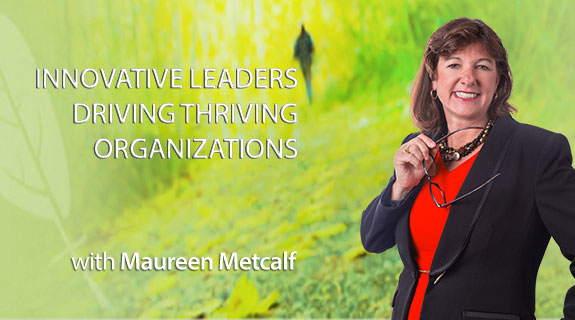This post was written by guest blogger, Kathleen Starkoff, founder, president and CEO of Orange Star Consulting in conjunction with a VoiceAmerica  interview that on aired on August 23: How Can You Successfully Implement Large Scale Change?
Most of us have had the occasion to be participants in, or witnesses to, complex mission-critical system-based projects like Enterprise Resource Planning (ERP) conversions, company mergers, or acquisitions. Personally, I have engaged in hundreds of complex projects, and what often strikes me is the profound impact that overseeing executives can sometimes have that inadvertently complicates the effort. Have you observed any of these common oversight practices and their unfortunate consequences?
⢠Single-dimension coaching is when one parameter, like the implementation date, formally or informally defines success. To be sure, the implementation date is often an important target established, presumably, with good reason. Further, on-time delivery represents a critical and challenging aspect of project management.
A simple and emphatic message like âdeliver on timeâ is compelling. When such a focus is established, well-communicated, and emphasized, one can assume that this primary focus will be achieved. Unfortunately, the primary parameterâs success is often achieved at the cost of lesser parameters, like poor quality or missed functionality, the sting of which lives on long after the implementation date.
Leaders who coach from a balanced perspectiveâunderstanding and appreciating the inter-dependencies of dates, plans, scope, and resourcesâwill encourage better holistic outcomes. Further, leaders who support a preemptive plan for talent, time, and/or financial contingencies for the inevitable unforeseen circumstance, at levels commensurate with the initiativeâs complexity, channel the teamâs energy solidly on execution.
⢠Overly optimistic coaching is an environment where analysis and reporting tends to be unduly positive because influential leaders, who define the culture, value optimism. In project delivery, like sales and many other business areas, optimism is an important and necessary cultural characteristic.
However, optimism can play an adverse role in decision making when the characteristic is dominant. Project management requires coordinated planning, analysis, and realistic progress reporting. When a team is overly-optimistic, and/or hesitant to report failure, the necessary and sensitive synchronization of data is compromised. When such data is then amalgamated across teams of similar optimistic culture, the compromise is magnified. The environment produces a proliferation of âon-targetâ project milestones reporting right up until the milestones are unexpectedly missed.
Leaders who engage from a curious (âTell me what is happening.â) perspective versus leading from a goal focused (âWe are on target, arenât we?â) perspective, create a safe environment for the messenger to share the unbiased reality of the project. This open and trusted relationship can be replicated across project teams to create a virtuous cycle of fact-based data and information. It also encourages the preemptive identification and resolution of issues, minimizing big surprises and increasing the probability of success.
⢠System-centric project planning is when a projectâs definition of success is the conversion or implementation of a system. That is, after months or years of IT and business engagement, a system goes âliveâ with a new system or version, which is, statistically speaking, far easier said than done.
But implementing a system without leveraging the opportunity that large scale system change represents is regrettable. It is a terrific people and process change opportunity, work that can be leveraged for real benefit. The work of engagement around design, training, and conversion with the business provides the perfect platform for identifying people and process opportunities and integrating the change into the solution. The benefit annuity is squandered, if the success hurdle is simply system related. Instead, system change can and should be used to drive ongoing business benefits of real dollar savings or customer service improvements. It does not make the system change effort any more difficult. Conversely, the addition of these benefits increases business ownership and engagement, providing an effective stimulus for the change.
Leaders who engage early in the project construct to define substantial complementary business outcomes measured in specific quantitative and/or qualitative ways will be able to creatively and sustainably address problems or opportunity areas. The business outcome focus will ensure the enthusiastic engagement of all parties through the projectâs duration and a vibrant celebration for the resulting annuities brought to life by the system change.
I have witnessed these themes carried out in various forms many times. As real and material as the adverse impact on the mission-critical project or the business; in every case, the leader, while well-intentioned in his actions, caused sub-optimal project performance, delivery, and outcomes.
I have also witnessed these themes performed in the most positive sense. Leaders, who through their visible and vocal sponsorship, seemingly doubled the energy of the project team, enabling impossibly-tall hurdles to be jumped and ridiculously-aggressive deadlines to be met.
Chances are that you have witnessed a bad example, or two, of the above themes. Â After reading the related comments and insights, I hope you are one of the leaders who is learning from the errors of others and you are leading in a way that avoids these errors, and better yet, sets the standard for what is possible! What are you doing to exemplify the positive representation of the themes and the exceptional results? What do you do to encourage others to avoid the pitfalls and learn from the lessons of others?
About the Author
Kathleen Starkoff, founder, president and CEO of Orange Star Consulting is a cyber security expert, a talented headline speaker and a senior, trusted advisor to CIOs across a wide range of industries, Fortune 500 companies and the National Science Foundation. Her ability to provide valuable counsel is a result of her 20 years of IT leadership experience in industry-leading organizations including CIO at The Ohio State University, CTO and Enterprise Risk Manager for Limited Brands, and CTO of Bank One Corporation.
Ms. Starkoff is a recognized “Leadership Fellow” and a featured cyber security speaker for the National Association of Corporate Directors. She is also Board Chair-elect and Chair of the Governance and Nominating Board Committee of Flying Horse Farms, part of Paul Newmanâs SeriousFun Childrenâs Network, which provides transformative camp experiences for seriously ill children. She holds a master’s degree in business administration from Case Western Reserve University, and a bachelor’s of science degree, cum laude, in mathematics from Kent State University.






